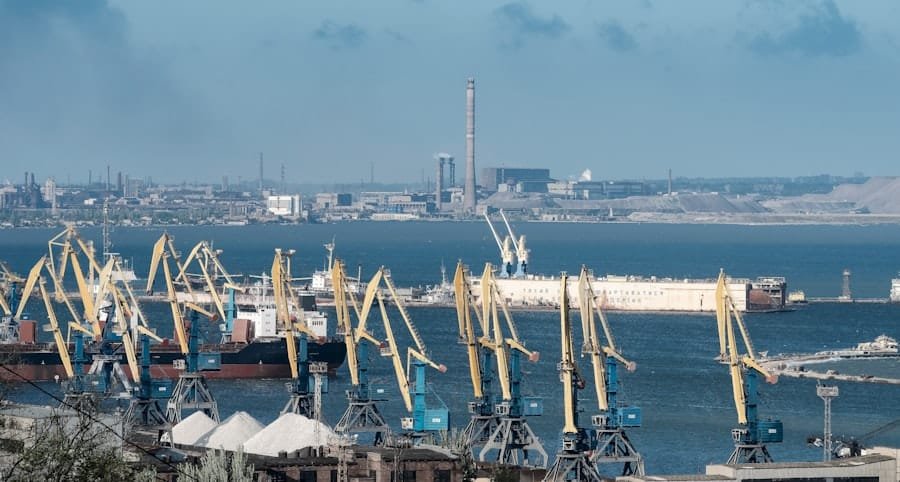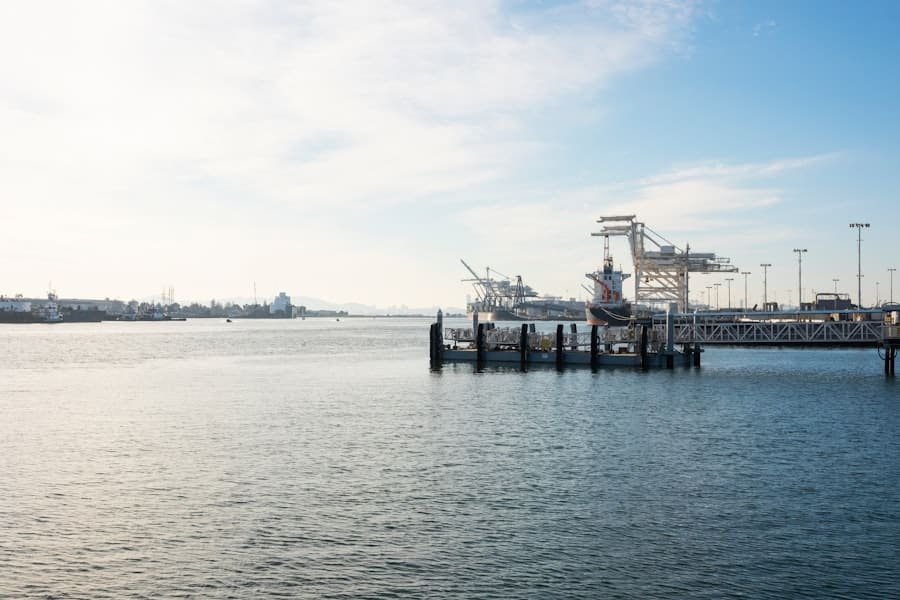Trade policies significantly influence global agricultural markets. These policies encompass various measures, including tariffs, quotas, subsidies, support programs, trade agreements, and import/export regulations. The primary objectives of trade policies are to protect domestic agricultural producers, ensure food security, and promote economic growth.
However, their impact on agricultural markets is complex and far-reaching, affecting farmers, consumers, the overall economy, and international trade relations. Agricultural trade policies regulate the cross-border flow of agricultural products, balancing the interests of domestic producers and consumers with those of foreign trading partners. These policies can substantially impact agricultural commodity prices, domestic producer competitiveness, and food supply availability.
Additionally, trade policies can influence the adoption of sustainable agricultural practices, technological innovation, and rural development. Understanding the various aspects of trade policies and their effects on agricultural markets is crucial for policymakers, farmers, and other stakeholders in the agricultural sector.
Key Takeaways
- Trade policies play a crucial role in shaping the agricultural market by influencing the flow of goods and services across borders.
- Tariffs and quotas can have significant impacts on agricultural markets, affecting prices, supply, and demand for agricultural products.
- Subsidies and support programs are commonly used by governments to protect and promote domestic agricultural industries, but they can also distort international trade.
- Trade agreements can have both positive and negative effects on agricultural markets, depending on the specific terms and conditions of the agreement.
- Import and export regulations can create barriers to trade in agricultural products, impacting the competitiveness of domestic producers and the availability of goods for consumers.
The Impact of Tariffs and Quotas on Agricultural Markets
Effects of Tariffs on Agricultural Markets
When tariffs are imposed on imported agricultural products, they increase the cost of these products for domestic consumers, leading to higher prices and reduced consumption. At the same time, tariffs can protect domestic producers from foreign competition by making imported products more expensive. However, tariffs can also lead to retaliatory measures by trading partners, disrupting international trade relations and potentially harming domestic exporters.
Effects of Quotas on Agricultural Markets
Quotas, on the other hand, limit the volume of imports, creating scarcity in the domestic market and driving up prices. While quotas can protect domestic producers from foreign competition, they can also lead to inefficiencies and market distortions.
Complex Consequences and Policy Considerations
Overall, tariffs and quotas can have complex and often unintended consequences on agricultural markets, affecting not only prices and trade flows but also the welfare of farmers and consumers. As such, policymakers must carefully consider the potential impacts of these trade policy instruments when designing agricultural trade policies.
The Role of Subsidies and Support Programs in Agricultural Trade

Subsidies and support programs are another important aspect of agricultural trade policies, aimed at providing financial assistance to domestic farmers and promoting agricultural production. These programs can take various forms, including direct payments, price supports, and input subsidies, and are intended to enhance the competitiveness of domestic producers, ensure food security, and support rural development. Subsidies and support programs can have significant effects on agricultural markets, influencing the production levels of different crops, the incomes of farmers, and the availability of food supplies.
By providing financial assistance to farmers, these programs can help mitigate the risks associated with agricultural production, encourage investment in new technologies, and promote sustainable farming practices. However, subsidies can also lead to overproduction and market distortions, affecting global trade flows and international market prices. Moreover, subsidies and support programs can also have distributional effects within the agricultural sector, benefiting certain types of farmers or regions while disadvantaging others.
As such, policymakers must carefully design these programs to ensure that they achieve their intended objectives without creating unintended consequences or distorting market incentives.
Trade Agreements and their Effects on Agricultural Markets
Trade agreements are another important aspect of agricultural trade policies, shaping the rules and conditions under which agricultural products are traded between countries. These agreements can take various forms, including bilateral or multilateral agreements, free trade agreements, and regional trade blocs, and are intended to promote economic integration, reduce trade barriers, and facilitate market access for agricultural products. Trade agreements can have significant effects on agricultural markets, influencing the competitiveness of domestic producers, the prices of agricultural commodities, and the overall structure of the agricultural sector.
By reducing tariffs and quotas, these agreements can expand market opportunities for domestic farmers, increase export revenues, and promote technological innovation. Moreover, trade agreements can also lead to greater specialization in agricultural production, as countries focus on producing goods in which they have a comparative advantage. However, trade agreements can also lead to challenges for domestic producers, as increased competition from foreign imports may put pressure on prices and market shares.
Moreover, trade agreements can also lead to changes in consumer preferences and demand patterns, as access to a wider range of products may influence consumption choices. As such, understanding the potential effects of trade agreements on agricultural markets is essential for policymakers and farmers alike.
The Influence of Import and Export Regulations on Agricultural Trade
Import and export regulations are another important aspect of agricultural trade policies, governing the conditions under which agricultural products are traded across borders. These regulations can include sanitary and phytosanitary measures (SPS), technical barriers to trade (TBT), labeling requirements, and quality standards, aimed at ensuring food safety, protecting public health, and promoting fair trade practices. Import and export regulations can have significant effects on agricultural markets, influencing the market access for domestic producers, the compliance costs for exporters, and the overall structure of international trade relations.
By imposing strict standards on imported products, these regulations can protect domestic consumers from unsafe or low-quality goods while also promoting environmental sustainability and animal welfare. However, import regulations can also create barriers to market access for foreign producers, leading to trade disputes and retaliatory measures. Moreover, export regulations can also affect the competitiveness of domestic producers by imposing additional costs or administrative burdens on exporters.
By requiring compliance with specific standards or certification requirements, export regulations can increase the transaction costs for exporters and limit their access to foreign markets. As such, policymakers must carefully balance the objectives of import and export regulations with their potential impacts on agricultural markets.
Case Studies: How Trade Policies Have Impacted Specific Agricultural Markets

Several case studies illustrate how trade policies have impacted specific agricultural markets around the world. For example, in the European Union (EU), the Common Agricultural Policy (CAP) has played a crucial role in shaping the agricultural sector by providing subsidies to farmers, regulating market interventions, and promoting rural development. The CAP has had significant effects on the production levels of different crops, the incomes of farmers, and the overall structure of the agricultural sector.
In the United States, trade policies have also had far-reaching effects on agricultural markets. For example, the implementation of tariffs on steel and aluminum imports has led to retaliatory measures by trading partners such as China and Mexico, affecting U.S. agricultural exports.
Moreover, trade agreements such as the North American Free Trade Agreement (NAFTA) have influenced market access for U.S. agricultural products in Canada and Mexico. In developing countries such as India, trade policies have also had significant impacts on agricultural markets.
For example, import regulations on agricultural products such as pulses have been used to protect domestic producers from foreign competition while ensuring food security for Indian consumers. However, these import regulations have also led to market distortions and inefficiencies in the domestic market.
The Future of Trade Policies and their Potential Effects on Agricultural Markets
The future of trade policies is likely to have significant effects on agricultural markets around the world. As global economic integration continues to deepen, trade policies will play a crucial role in shaping the competitiveness of domestic producers, market access for agricultural products, and international trade relations. Moreover, emerging challenges such as climate change, food security, and technological innovation will require policymakers to carefully consider the potential impacts of trade policies on agricultural markets.
For example, as countries seek to address climate change through mitigation measures such as carbon pricing or emissions trading schemes, trade policies may need to be designed to promote sustainable agriculture practices while ensuring competitiveness for domestic farmers. Moreover, as technological innovation continues to transform the agricultural sector through precision farming techniques or biotechnology applications, trade policies will need to adapt to these changes by promoting innovation while addressing potential risks. Overall, understanding the future trajectory of trade policies and their potential effects on agricultural markets is essential for policymakers, farmers, and other stakeholders in the agricultural sector.
By carefully considering the complex interactions between trade policies and agricultural markets, it is possible to design policies that promote economic growth while ensuring food security and sustainability for future generations.
For more information on the impact of trade policies on agricultural markets, check out the article “The Effects of Tariffs on Agricultural Trade” on The Econosphere’s blog. This article delves into the specific ways in which tariffs can disrupt agricultural trade and influence market dynamics. It provides valuable insights into the complexities of trade policies and their implications for the agricultural sector.
FAQs
What are trade policies in agriculture?
Trade policies in agriculture refer to the regulations and agreements that govern the international trade of agricultural products. These policies can include tariffs, subsidies, quotas, and other measures that impact the flow of agricultural goods across borders.
How do trade policies influence agricultural markets?
Trade policies can have a significant impact on agricultural markets by affecting the prices, supply, and demand of agricultural products. For example, tariffs can make imported goods more expensive, leading to higher prices for consumers. Subsidies can also distort market prices by artificially supporting domestic production.
What are some examples of trade policies affecting agricultural markets?
Examples of trade policies affecting agricultural markets include tariffs on imported agricultural products, subsidies for domestic farmers, and quotas on the amount of certain products that can be imported or exported. These policies can impact the competitiveness of domestic producers and the availability of certain products in the market.
How do trade policies impact farmers and consumers?
Trade policies can impact farmers by influencing the prices they receive for their products and the level of competition they face from imported goods. Consumers may also be affected by trade policies through changes in the availability and prices of agricultural products in the market.
What are the potential consequences of trade policies on agricultural markets?
The consequences of trade policies on agricultural markets can include changes in production levels, shifts in market prices, and impacts on the livelihoods of farmers. Trade policies can also influence the global distribution of agricultural products and the overall efficiency of agricultural markets.








